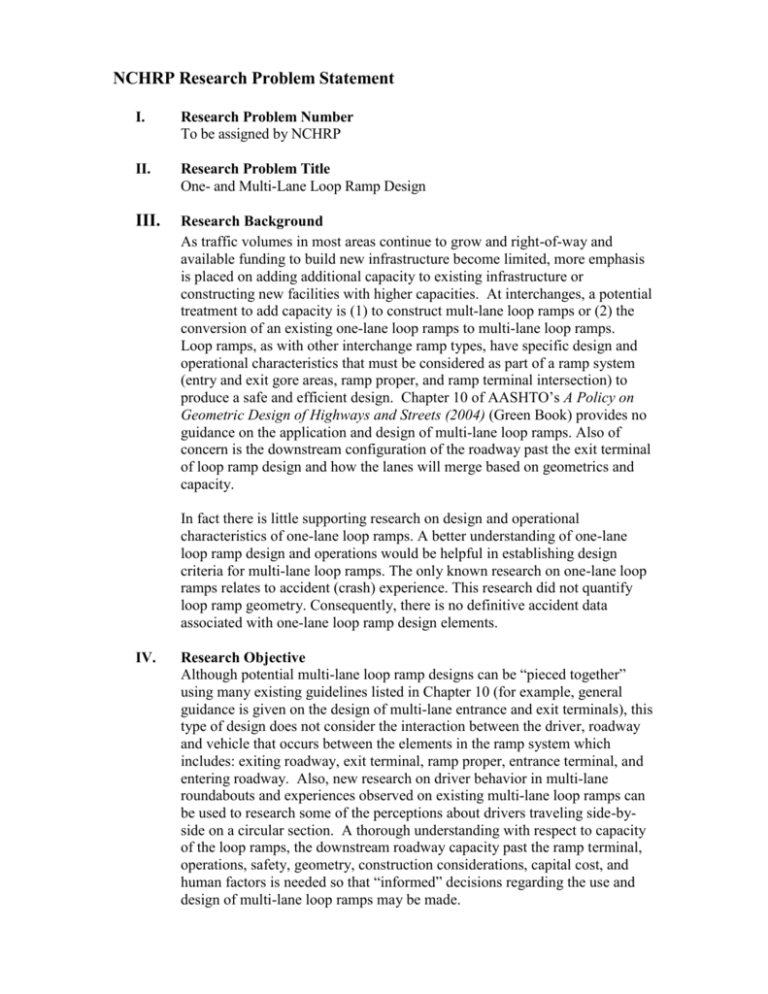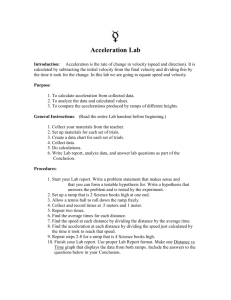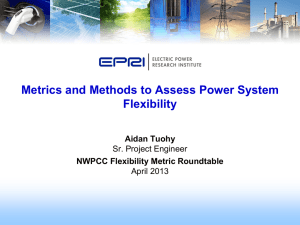Research Needs Stmt, One and Multi Lane Loop Ramp Design
advertisement

NCHRP Research Problem Statement I. Research Problem Number To be assigned by NCHRP II. Research Problem Title One- and Multi-Lane Loop Ramp Design III. Research Background As traffic volumes in most areas continue to grow and right-of-way and available funding to build new infrastructure become limited, more emphasis is placed on adding additional capacity to existing infrastructure or constructing new facilities with higher capacities. At interchanges, a potential treatment to add capacity is (1) to construct mult-lane loop ramps or (2) the conversion of an existing one-lane loop ramps to multi-lane loop ramps. Loop ramps, as with other interchange ramp types, have specific design and operational characteristics that must be considered as part of a ramp system (entry and exit gore areas, ramp proper, and ramp terminal intersection) to produce a safe and efficient design. Chapter 10 of AASHTO’s A Policy on Geometric Design of Highways and Streets (2004) (Green Book) provides no guidance on the application and design of multi-lane loop ramps. Also of concern is the downstream configuration of the roadway past the exit terminal of loop ramp design and how the lanes will merge based on geometrics and capacity. In fact there is little supporting research on design and operational characteristics of one-lane loop ramps. A better understanding of one-lane loop ramp design and operations would be helpful in establishing design criteria for multi-lane loop ramps. The only known research on one-lane loop ramps relates to accident (crash) experience. This research did not quantify loop ramp geometry. Consequently, there is no definitive accident data associated with one-lane loop ramp design elements. IV. Research Objective Although potential multi-lane loop ramp designs can be “pieced together” using many existing guidelines listed in Chapter 10 (for example, general guidance is given on the design of multi-lane entrance and exit terminals), this type of design does not consider the interaction between the driver, roadway and vehicle that occurs between the elements in the ramp system which includes: exiting roadway, exit terminal, ramp proper, entrance terminal, and entering roadway. Also, new research on driver behavior in multi-lane roundabouts and experiences observed on existing multi-lane loop ramps can be used to research some of the perceptions about drivers traveling side-byside on a circular section. A thorough understanding with respect to capacity of the loop ramps, the downstream roadway capacity past the ramp terminal, operations, safety, geometry, construction considerations, capital cost, and human factors is needed so that “informed” decisions regarding the use and design of multi-lane loop ramps may be made. The research objective is two fold. First, to establish more definitive design criteria for one-lane loop ramps incorporating the exit, ramp proper and entrance. Secondly, to provide guidance on the proper planning and location of multi-lane loop ramps and to expand the profession’s knowledge and understanding of the design of multi-lane loop ramps with respect to geometry, operations, and safety. A final report should include proposed changes to AASHTO Policy if results support a change. Research tasks may include: Phase 1 Conduct literature search and state-of-the-art review. Conduct survey of US and State DOT experience. Identify need for additional research and select sites for data collection. Identify potential micro-simulation software for calibration Prepare interim report. Phase 2 Collect additional data at selected sites identified in Phase 1. Simulate various design alternatives to study the operation of one- and multilane loop ramps using appropriate micro-simulation software. Phase 3 Prepare a final report documenting all aspects of the research. Develop draft material for inclusion in AASHTO’s, A Policy on Geometric Design of Highways and Streets. V. Literature Search There is no known definitive research associated with one- or multi-lane loop ramp design, safety and operational characteristics except for limited and generalized accident research associated with a variety of ramp types VI. Estimate of Research Funding and Period The estimated funding for this project is $450,000. The estimated time to conduct the research including review time is 24 months. VII. Urgency, Payoff Potential, and Implementation AASHTO’s, A Policy on Geometric Design of Highways and Streets provides minimal guidance of design parameters associated with one-lane loop ramps. In terms of multi-lane loop ramps, although general guidance is given on the design of multi-lane entrance and exit terminals, little information is available regarding the design of a multi-lane loop ramp proper. Additionally, no guidance is given on the proper planning and location of multilane loop ramps. With more detailed information, highway designers will be better able to make informed decisions regarding the applicability and design of one- and multi-lane loop ramps to various site-specific conditions. This research is urgent due to the potential savings in cost and impact (environmental, length of construction, right-of-way, etc) that may be realized through the construction of one- and multi-lane loop ramps versus other alternatives (i.e. adding directional or semi-directional ramps). The research is also urgent to minimize the implementation and design of one- and multi-lane loop ramp designs based on dated information and limited knowledge that may lead to operational or safety deficiencies. VIII. Problem Statement Development TRB Committee on Geometric Design (author) TRB Committee on Operational Effects of Geometrics (author) AASHTO Technical Committee on Geometric Design







